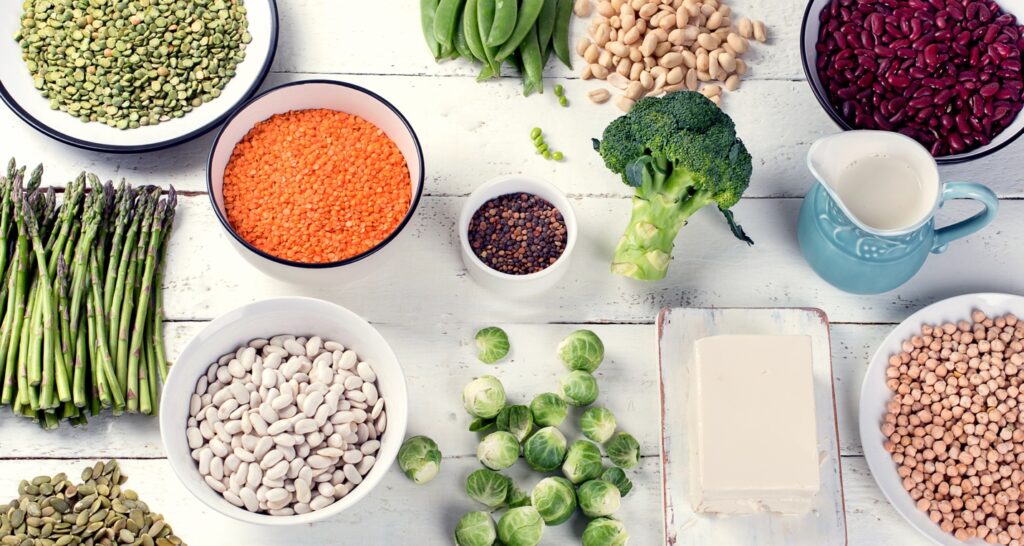How to Prevent and Manage Type 2 Diabetes with Diet and Lifestyle
How to Prevent and Manage Type 2 Diabetes with Diet and Lifestyle

Type 2 Diabetes
In order to have a diagnosis of type 2 diabetes, one must have all of the following: hyperglycemia (high blood sugar), insulin resistance and impaired insulin secretion1. Insulin is a hormone that is released from the pancreas when there is glucose in the blood. Insulin helps to remove glucose from the blood by bringing it into the cells1. If insulin is constantly being released, due to high glucose in the blood, the cells become less sensitive to insulin and less glucose is taken in by the cells. The cell receptors may also be impaired 2. Also, eventually less insulin is released, and therefore, there is less insulin to bring glucose into the cells 2. Type 1 diabetes, on the other hand, is an autoimmune disorder where the body attacks the beta cells in the pancreas, thus the pancreas is not able to produce insulin anymore. This is usually managed by taking insulin3.
Metabolic syndrome is a cluster of different conditions such as insulin resistance, obesity, elevated white blood cell count, hypertension, dislipodemia, inflammation, and an apple shaped body type (bigger waist circumference) 2 . These conditions put one at a greater risk for type 2 diabetes.
90-95% of diabetes cases are type 2 diabetes, and usually start later in life, but can also develop earlier in life (which is happening more often these days)4. Around 34.2 million adults have diabetes and 1 in 5 do not know it4. Diabetes is the 7th leading cause of death and the amount of people diagnosed has doubled in the past 20 years4.
Fortunately, type 2 diabetes can be managed and prevented with diet, exercise, and lifestyle factors.
Some contributing factors to type two diabetes are:
Diet high in refined carbs, sugar and saturated fat, weight gain (especially visceral fat), obesity, toxic exposure (body products, food, water, environment, heavy metals), fatty liver, stress, imbalance of omega 3, 4, 9, certain medications, and inflammation1,2.
Some common symptoms of type two diabetes are:
Excessive thirst and hunger, blurry vision, high blood glucose, overweight/obese, fatigue, and other risk factors such as history of family members with diabetes2.
Other ailments associated with insulin resistance:
PCOS, hypertension, CVD (cardio vascular disease), dyslipidemia, dementia, and sleep apnea 2 . IR can also lead to infertility, retinopathy, renal disease, neuropathy, amputations, and neurodegeneration 2.
Diet, Lifestyle and Diabetes
First, I will mention some nutrients needed for glucose and insulin interaction:
Thiamine, zinc, magnesium, manganese and essential fatty acids2.
Nutrients that support insulin signaling:
Vanadium, chromium, CLA, lipoic acid, inositol, magnesium and vitamin E 2.
An ideal diet for preventing and managing type 2 diabetes is the Mediterranean diet. The Mediterranean diet is associated with better glycemic control and risk of cardiovascular disease than other diets, including a low-fat diet 5.
A Plant-based Version of a Mediterranean diet:
A traditional Mediterranean diet consists of daily intake of fiber rich foods: “whole grains, olive oil, fruits, vegetables, beans and other legumes, nuts, herbs, and spices 6.” Oily fish is recommended to be eaten at least two times a week, and is preferred over other animal meats 6. Poultry, eggs, and dairy are to be eaten in moderation such as a few times a week, and red meat a few times a month 6. Drinking adequate purified water is important6. Daily physical activity is also emphasized 6. This diet also does not consist of processed foods and lots of sauces and condiments. At least 5 servings of vegetables a day is also recommended.
A plant-based version of the Mediterranean diet also includes whole grains, olive oil, fruit, vegetables, legumes, nuts and seeds, and herbs and spices. You can get omega 3 from flaxseed oil, hempseeds and chia seeds and Algea DHA instead of fish. I think this is ideal over fish, since fish can have heavy metals and microplastics in it. It is also better for the sea! If you eat dairy, organic and raw is ideal, and cultured organic dairy, however, it should still be eaten in moderation. Meat is not necessary since you can get enough protein from legumes and nuts and seeds, as well as whole gains and vegetables. You may want to supplement with vitamin D3 and B12.
On Whole Grains
Gluten free whole grains include brown rice, quinoa, buckwheat, wild rice, oats, and non-GMO corn. I would avoid wheat, even whole wheat, since wheat has been hybridized and the gluten is stronger, making it harder to digest. Gluten in general can make the gut more permeable, which can lead to inflammation. Inflammation can lead to insulin resistance. You can avoid gluten all together, or try ancient grains that have not been hybridized, such as spelt, kamut, einkorn, Emmerson and farro. Barely and rye also contain gluten, but are both a different from of gluten than wheat.
On Water
RO and Distilled purified water is not recommended, since they are acidic and can leach minerals from the body. If you already have an RO system at home, you can add trace minerals back in.
Some examples of healthy oils and fats:
Olive oil, avocado, nuts and seeds, and ghee instead of butter, refined oils, vegetable oils, canola oil and meat
Complex Carbohydrates (whole grains):
Brown rice, wild rice, quinoa, buckwheat, barely, farro, spelt, kamut, einkorn, and steel-cut oats. As I mentioned earlier, I would avoid wheat, even whole wheat, since hybridized wheat can be a source of inflammation. Avoid anything white or refined: white rice, white flour (including enriched wheat flour, which is a fancy name for white flour), white potatoes, instant oatmeal, cornflakes etc. You want the package to say whole grain (whatever the name of the grain is).
Barely is a grain that is beneficial for diabetes and can help reduce blood sugar levels 8.
It was found that, “dietary fibres from barley kernel could generate an increase of the gut bacteria Prevotella copri, which had a direct regulatory effect on blood sugar levels and help decrease the proportion of a type of gut bacteria that is considered unhealthy8.”
Combine your grains with a legume.
A study in India found that just replacing 15% of a flour chipati with chickpea flour helped to lower glucose levels, as well as combing beans with rice7. Therefore, the combination of a legume with a whole grain can help to lower the glycemic load. You can also add a healthy fat, such as nuts or nut butter with a fruit to help control glucose.
Example of a meal:
Fill half your plate with salad or veggies (steamed, roasted or lightly stir-fried with olive oil).
Have a serving (1/2 cup) of a cooked complex carbohydrate, ½ cup of cooked beans and 1 Tbsp of olive oil.
Beneficial Supplements for Type 2 Diabetes
You can also add spices such as cinnamon or fenugreek to help balance blood sugar 9.
Fenugreek seeds are a good source of soluble fibre 10. This helps to slow down digestion and the absorption rate of carbohydrates, helping to lower blood sugar levels 10. Fenugreek is from South Asia, North Africa and parts of the Mediterranean 10 and is also used in Ayurvedic medicine to help manage type 2 diabetes. It is recommended to have 10g/day of fenugreeks seeds in warm water 11 a day. It was found to have a, “synergistic effect along with diet control and exercise on fasting blood glucose and HbA1C within 6 months of treatment 11.
Cinnamon also helps to balance blood glucose. A systematic review found that, “the consumption of cinnamon is associated with a statistically significant decrease in levels of fasting plasma glucose, total cholesterol, LDL-C, and triglyceride levels, and an increase in HDL-C levels 12”. Celyon cinnamon is ideal.The recommended dosage is 120 mg/d to 6 g/d – roughly 1 tsp in warm water twice a day 12.
Recap
Overall, type 2 diabetes can be prevented and managed with proper diet and lifestyle. A high fiber diet consisting of whole grains, legumes, nuts and seeds, fruits, vegetables and unsaturated fats is recommended. Avoid refined flours, sugar, saturated fat (meat and dairy), and processed foods. Heavy metal toxicity and other toxins from daily life can also be a contributing factor and should not be overlooked. A cleanse may be beneficial. Daily exercise, adequate sleep, and stress management are also essential to reduce inflammation in the body and manage glucose levels. Herbs like fenugreek and cinnamon can also aid in glucose balance. Getting essential vitamins and minerals is also important!
References:
- Rakel, D. Integrative Medicine. 4th Philadelphia, PA: Elsevier; 2018: 320-346.
- Ross, K. Insulin Resistance, Metabolic Syndrome, Type Two Diabetes. Recorded lecture. SCNM Instructure. Accessed October 6, 2021. https://scnm.instructure.com/courses/4047/pages/module-2-lecture?module_item_id=166691
- Differences Between Type 1 and Type 2 Diabetes. Diabetes UK. Accessed October 16th. https://www.diabetes.org.uk/diabetes-the-basics/differences-between-type-1-and-type-2-diabetes
- What is Diabetes? CDC: Centers for Disease Control and Prevention. Reviewed June 11, 2020. Accessed October 16, 2021. https://www.cdc.gov/diabetes/basics/diabetes.html
- Esposito K, Maiorino MI, Bellastella G, Chiodini P, Panagiotakos D, Giugliano D. A journey into a Mediterranean diet and type 2 diabetes: a systematic review with meta-analyses. BMJ Open. 2015 Aug 10;5(8):e008222. doi: 10.1136/bmjopen-2015-008222. PMID: 26260349; PMCID: PMC4538272.
- Diet Review: Mediterranean Diet. Harvard T.H. Chan. Updated December 2014. Accessed October 16th. https://www.hsph.harvard.edu/nutritionsource/healthy-weight/diet-reviews/mediterranean-diet/
- Chawla R, Madhu SV, Makkar BM, et al. RSSDI-ESI Clinical Practice Recommendations for the Management of Type 2 Diabetes Mellitus 2020 [published correction appears in Indian J Endocrinol Metab. 2020 Jul-Aug;24(4):376]. Indian J Endocrinol Metab. 2020;24(1):1-122. doi:10.4103/ijem.IJEM_225_20
- Barley could help people with type 2 diabetes manage blood sugar levels and lose weight. Diabetes Research and Wellness Foundation. Published February 23, 2016. Accessed October 16, 2021. https://www.drwf.org.uk/news-and-events/news/barley-could-help-people-type-2-diabetes-manage-blood-sugar-levels-and-lose
- Yilmaz Z, Piracha F, Anderson L, Mazzola N. Supplements for Diabetes Mellitus: A Review of the Literature. J Pharm Pract. 2017 Dec;30(6):631-638. doi: 10.1177/0897190016663070. Epub 2016 Sep 11. PMID: 27619931.
- https://www.diabetes.co.uk/natural-therapies/fenugreek.html
- Ranade M, Mudgalkar N. A simple dietary addition of fenugreek seed leads to the reduction in blood glucose levels: A parallel group, randomized single-blind trial. Ayu. 2017;38(1-2):24-27. doi:10.4103/ayu.AYU_209_15
- Allen RW, Schwartzman E, Baker WL, Coleman CI, Phung OJ. Cinnamon use in type 2 diabetes: an updated systematic review and meta-analysis. Ann Fam Med. 2013;11(5):452-459. doi:10.1370/afm.1517
The information presented is for educational purposes only and it is not intended to treat, diagnose, cure, or prevent disease.
